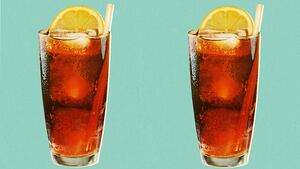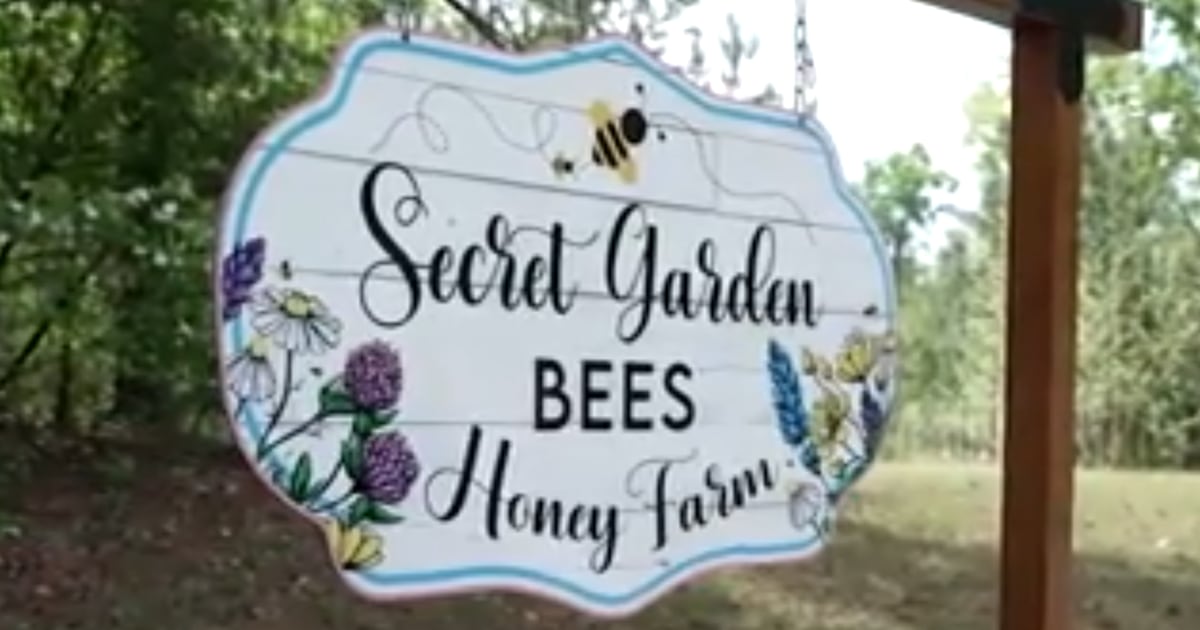At the end of every gardening season, I tell myself to sow fewer seeds the following year and every spring I ignore my own advice.
I don’t listen well—even to myself—which means that come late summer, when the garden surges into its most fecund period, I am awash in produce. It is, of course, a fun problem to have. Tomatoes will be sauced, cayenne peppers frozen in large bags until I’m ready to ferment my yearly batch of hot sauce and pickles will be pickled.
This year in particular I’ve been swimming in cucumbers. I planted the unimaginatively and perhaps over-accurately named “Homemade Pickles Pickling Cucumbers.” If I don’t pick the cute cukes in the morning, the next day they weigh a pound-and-a-half.
Pickling falls into three general categories: Vinegar pickling, which is how you get bread and butter pickles and relishes; salt brining, which is how sauerkraut and kimchi are made, as well as the mother of all pickles, the sour; and the quick pickle. Bread and butter pickles are not my forte, and although I do occasionally attempt a new relish, I’ve never made anything worth crowing about. But sour pickles and quick pickles are my specialty.
You can move a lot of cucumbers with the simplest quick pickle of all. I like to slice an unpeeled cucumber at about hamburger chip thickness and drop the slices into a plastic pint container ,like the kind egg drop soup comes in. I sprinkle it with salt and turbinado sugar—probably a half teaspoon of each—put the lid on and shake them hard, like a cocktail, before letting them sit for about half an hour. You can do this in a bowl and just stir them if you don’t have a stack of takeout containers handy. They don’t need anything else, but sometimes I’ll gild the lily after draining the juice, adulterating with a few drops of sesame oil, some flecks of chili, or a splash of pale vinegar. They’re wonderful on salads, accompanying barbecue, or arrayed on pad Thai.
My favorite quick pickles this year come from a recipe my mom made when I was a kid out of Peter and Joan Martin’s 1970 Japanese Cooking, which calls it Kyuri Matsumae. Matsumae is a town from which a lot of pickles come and kyuri means cucumber in Japanese. Their recipe is a close relative of the shoyuzuke pickles that are part of the Japanese tsukemono tradition. I cannot attest to the authenticity of this recipe, only to its deliciousness.
Wash but don’t peel two pounds of cucumbers, slice off the ends and slice them in half, long ways. You can smash them with a rolling pin or the flat side of a knife, but I always end up with cucumber seeds all over the place. So I’ve gone back to scooping out the seeds with a spoon in one long motion directly into the trash, as if I were making a cucumber canoe. (You can tell this is a recipe from my childhood.) Cut or snap the halves of cucumbers into one-inch lengths and put them in a wide bowl. Rinse a five-inch piece of kombu, snip it or slice it into thin strips, and add it to the bowl. Add some chili pepper—something like a heaping tablespoon of gochugaru was great for me but add whatever you like, dry or fresh.
Sprinkle with a half teaspoon of MSG. The original recipe calls for a whopping half cup of soy sauce, and I have yet to bring myself to be able to add that much. I have worked my way up to something like a third of a cup. Mix it all nicely.
Cover it loosely with plastic wrap and weight it with a plate on which you’ve put something heavy. If you’ve got pickling weights, great. If you’ve got a pound of butter in your fridge, put it on a plate and put the plate on the wrap. Put it in the fridge and let it sit at least overnight. I let one go for three days, which is the longest I’ve ever waited. It was fantastic. I cannot vouch for what happens after that. The original recipe says not to wash the pickles before serving, which seems to me to go without saying. Make sure you get a little bit of the chili and the kombu in each bite.
There’s enough about this recipe that seems slightly off that if I’d read it now without having eaten it as a child there’d be no way I’d make it, but I assure you it’s mind-blowing. Sweet, complex, viscous and absolutely blasted with umami (MSG, soy sauce and kombu!). It’s a great snack with beer, and a great cookout side for a grilled steak or mushrooms.
Even with recipes that good, you cannot possibly eat your way through a garden of cucumbers. You also have to give them away and pickle them.
Enter what is known in the delis of NYC as a sour. They come in full and half sour, and some folks say that full sours have vinegar added to them, but I think more commonly and accurately the full/half distinction indicates how long the pickle has been fermenting. A couple of weeks will do it for half sours, and full sours can go for longer. Half sours won’t keep as long, but the whole discussion is superfluous for home production. You’ll start with fresh, bright half sours (I start eating them well before any self-respecting deli man would consider them a pickle), and finish eating them as they crest into full sour territory.
This is the original dill pickle and here’s how you make it.
You need clean vessels—they can be anything nonreactive, but for the simplicity’s sake let us say you picked up two pounds of firm skinned, bumpy, unwaxed pickling cukes at the farmers market, which you’re going to put in two 32-ounce mason jars.
To call this a recipe is silly. It isn’t. It’s a ratio and some digressions. You’re taking advantage of the fact that salt in solution will seek equilibrium by adding unsalted cucumbers to a salty water (which we call brine). The salt in the water will penetrate the cucumbers and ferment them into pickles.
Start with one quart of water. Chlorine is not your friend in this. (It’s been messing up your bread, too.) You can boil your water, and allow it to cool, which seems unappealing in summer. So, I simply fill a bowl with a quart of water the day before I want to start this process and leave it uncovered on the counter, so the chlorine can evaporate.
While it’s de-chlorinating overnight, let three tablespoons of kosher salt dissolve in it. You want a level between 1.5 and 3 percent of the total weight of food and the water. For half sour pickles, which you don’t expect to have for more than a week or two, you can knock it back to 2 tablespoons of salt, which will give you a 3 percent brine. For full sours, you want a five percent brine and three tablespoons of salt will get you there. Stir it until dissolved.
The next day, put your cucumbers in a big bowl of cool water and gently scrub off the spines with your hands. Pluck the blossom end or trim it, because there’s an enzyme there, which will make your pickles limp.
I am a proponent of slicing the pickles into spears because you get more pickles in each jar, and the spears pick up flavors much faster, which is nice because I am impatient.
Spices: Lots of garlic and mustard seed. I tend to skip coriander—sorta bossy?—but it’s traditional and good. Black peppercorns. Dill, obviously, but I’ve made plenty without. Bay leaves, which also help to keep things crisp. Right now, I’ve got a half gallon of pickles going with two cayenne peppers. I’m about to make another with shiso leaves. Grape leaves are fun.
To assemble, put whichever spices you choose in each of your two mason jars. I would put into each: five sprigs of dill, five cloves of garlic, a teaspoon of mustard seed, four bay leaves and a halved chili pepper. Tilt the jar on its side in your hand and slide the pickles into the jar, so that they are stacking up like firewood. Distribute evenly between the two jars. Back on the work surface, pour your brine into the jars. If you have a lot of leftover brine, take a cucumber out of each and fill it up. If you are left with a few ounces of brine at the bottom of the bowl don’t worry about it.

Make sure that the pickles are submerged. They like to float, and although the shoulders of the jars are designed to help hold things down, a little glass pickling weight or a clean rock will hold them down.
Cover. If you have tops with airlocks, great. If you don’t, just cap them loosely, so that the CO2 can escape. Maybe put them on a towel or on a tray in case the ferment really starts to bubble (it probably won’t).
Leave the jars full of pickles out on the counter for a day or two. Some folks say that if you leave them in the sun, by a window, you’ll inhibit the growth of bacteria you don’t want. Maybe that’s true. After a day or two, they should taste a little different. (A great trick is to cut up a final cucumber into bite sized pieces and array it over the top of the jar, so that you have a test piece at the ready.)
Slide them into the fridge and wait. Because you haven’t pasteurized your pickles via canning them, they aren’t shelf stable and they continue to develop while under refrigeration.
Never in my life have I waited.
In four days, they’ll taste great. In two weeks, they’ll taste like half sours. They start to get really complex and sour about a month in when the dill fades to the back in favor of the bay and garlic. It’s a bite full of history and full of the hope that you can drag what’s left of summer into autumn.








